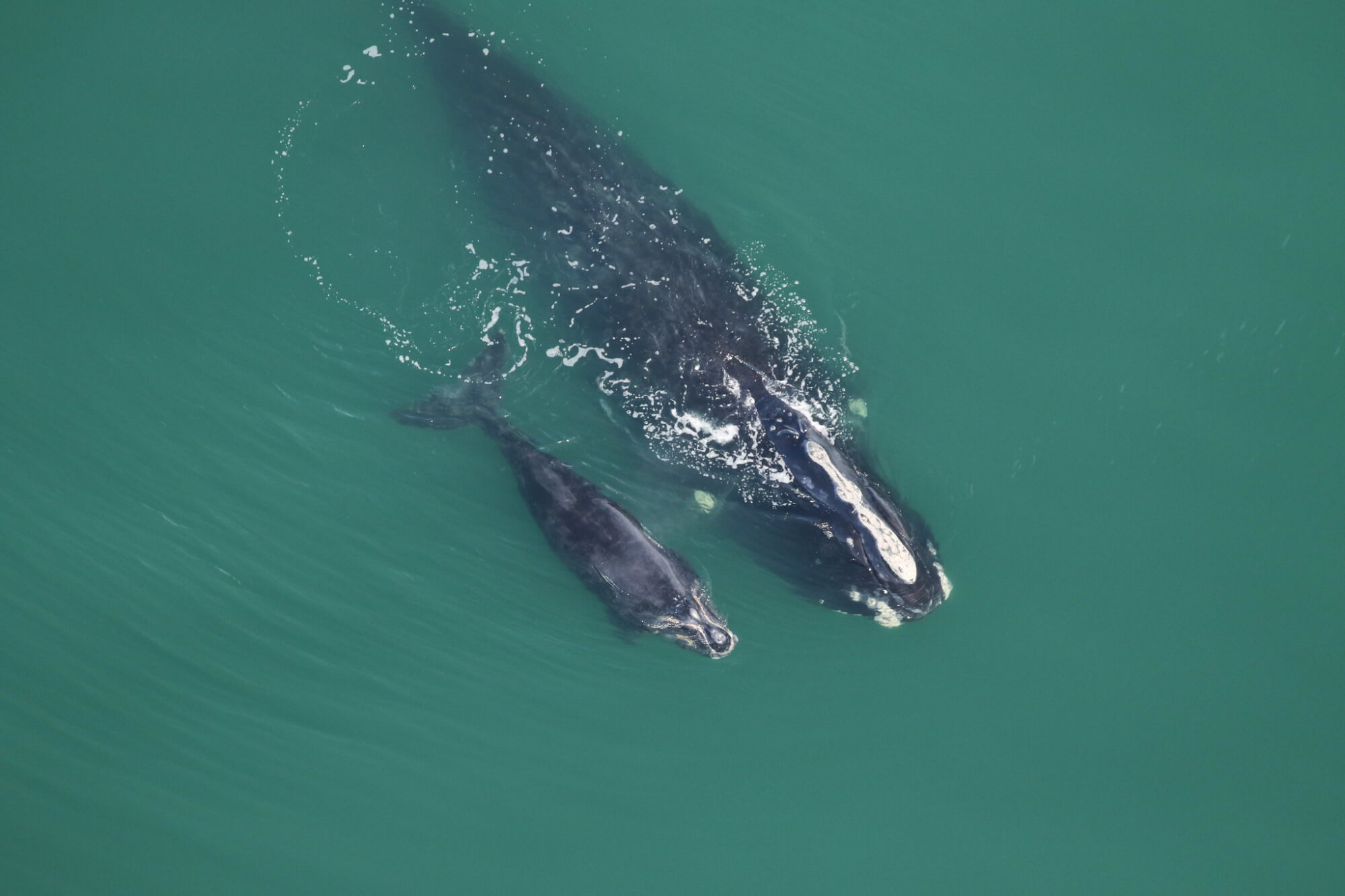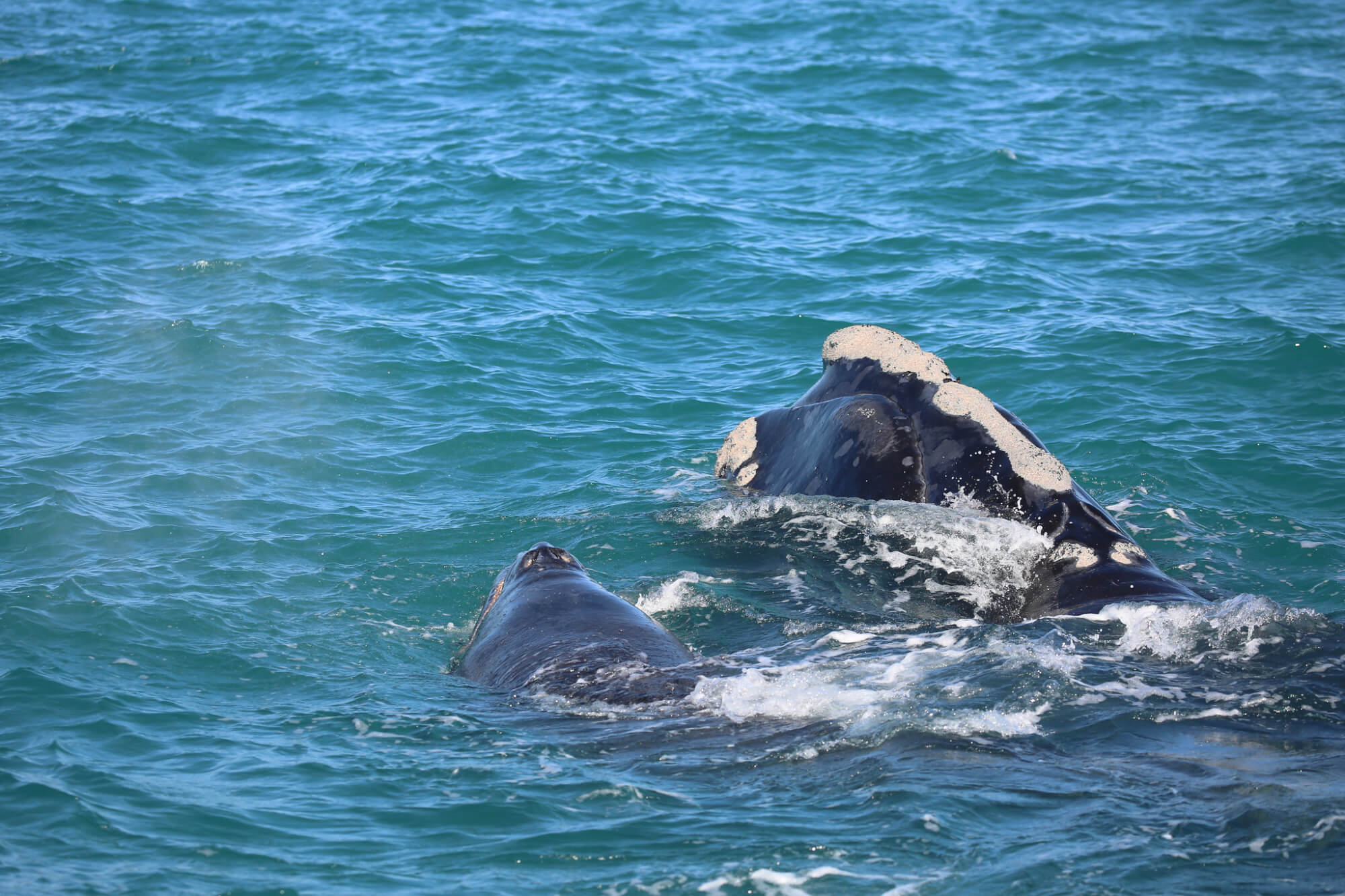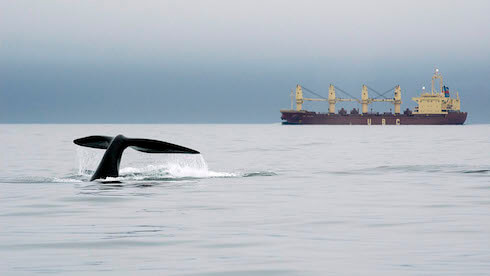The endangered North Atlantic right whale is subject to special surveillance and protection measures. Since 2017, the species has been experiencing an “exceptional mortality event”. As of January 1, 2021, there have been 32 carcasses and 12 serious injuries or entanglements over the past 4 years. Safeguarding the North Atlantic right whale is an issue of ecological, heritage and cultural importance. It represents a major challenge in terms of achieving a harmonious coexistence between whales and human activities.
In 2020, no carcasses were found on this side of the border. Along the US Atlantic Seaboard, there were 2 deaths that year, both calves that had succumbed to collisions. Three severe entanglements involving adults and one potentially fatal collision with a calf were also reported.
Also in 2020, scientists revised their estimates of the species’ total population. Instead of 400 right whales, there are believed to be just 356! The species has also been uplisted to “Critically Endangered” on the Red List of the International Union for the Conservation of Nature (IUCN), the last threshold before extinction.
Continue to follow 2021 North Atlantic right whale news here.
North Atlantic right whales: background
With an estimated population of fewer than 400 individuals, the North Atlantic right whale – also known as the northern right whale or black right whale – is in critical condition. Latest estimates indicate a population of only 356 individuals. While the population of the southern right whale is growing, the North Atlantic right whale is endangered. Only about 100 females of reproductive age remain in the population, births are rare, and mortality attributable to human activity remains high. Within the last three years, 32 right whale carcasses were reported in the canadian and american waters.
After being hunted extensively for centuries, this “urban whale” now faces other challenges, mainly collisions with ships and entanglements in fishing gear. It should be pointed out that human presence has a strong impact on the species’ distribution area. The North Atlantic right whale generally winters off the coasts of Florida and Georgia, where it gives birth, then migrates north in the spring toward the Bay of Fundy, Cape Cod and the Gulf of Maine to feed in cold, nutrient-rich waters. Learn more about the North Atlantic right whale.
Since 2017, probably due to the rising temperatures of coastal waters, the Bay of Fundy appears to be less visited by this species, while in parallel, right whales are being observed much more frequently in the Gulf of St. Lawrence. That year, 18 carcasses were found near the Canadian and American coasts, including 12 in the St. Lawrence. This catastrophic mortality event for the species would ultimately result in the implementation of emergency measures for the remainder of the summer. Click here for the sequence of events for 2017.
In 2018, perhaps thanks to the robust measures applied in the Gulf of St. Lawrence (speed reduction areas for watercraft, crab fishery regulations), no right whale carcasses were found in Canadian waters, and just three in US waters. Click here for the sequence of events for 2018.
In 2019, however, despite the renewal of protective measures, 10 carcasses were found in Canada and the US, bringing the total number of mortalities to 31 individuals in just 3 years. The necropsies performed are not always able to pinpoint the cause of death, but seem to suggest ship strikes and entanglement. Click here for the sequence of events for 2019.
Faced with the challenge of the coexistence of North Atlantic right whales with human activities, the maritime and fishing industries have mobilized to seek solutions for 2020.
Ressources and references
North Atlantic right whale data sheet :Whale Online
North Atlantic right whale photo-identification catalogue: New England Aquarium
Interactive map of North Atlantic right whale sightings in Canadian waters: WhaleMap et On Alert for whales
NOAA right whale sighting advisory system: NOAA
Monitoring of collision-avoidance measures: Transport Canada
Fishing closures for North Atlantic right whale protection: Fisheries and Oceans Canada
Fishery management measures: Fisheries and Oceans Canada
North Atlantic Right Whale – 2019 Mortality events report
CBC News 6-episodes podcast about NARW (2017): Deep Trouble
Follow-up of 2020 events
On January 8, the fourth right whale calf of the season off Georgia, USA. It seems like a good surprise, as the previous years birth count was very low (3 calves in 2017, non in 2018 and 7 in 2019). The calf’s mother is #2360, “Derecha,” which means “right” in Spanish.
Unfortunately, it is in poor shape. Giant scars run across its head to its jaw, likely the result of a collision with the propeller of a boat engine. The outlook is not very good: the injury damages the mouth and could prevent the calf from nursing and feeding. the calf was the subject of an ambitious intervention consisting of the administration of antibiotics; however, the mother-calf pair has not been seen since then.
NOAA Fisheries Follow-up of the case
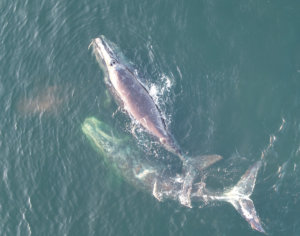
Speed limits reduced to 10 knots in certain areas, closure of fishing zones, increased surveillance: the Government of Canada has announced a series of measures to lower the risk of entanglement and collisions for North Atlantic right whales. Read more
It is widely known that the North Atlantic right whale population is struggling, but a study has recently underscored just how precarious this population really is. Researchers compared the fitness of North Atlantic right whales with that of their southern hemisphere cousins. The result is clear: “the body condition of the North Atlantic right whale was significantly poorer compared to the three southern right whale populations,” points out the study’s lead author Fredrik Christiansen of Aarhus University in Denmark.
This conclusion is based on the collaboration of 12 research institutes in 5 different countries. This international team set out to measure the length and girth of right whales using aerial photography and a technique known as photogrammetry. Three of the populations studied – southern right whales from Argentina, Australia and New Zealand – are growing, while that of the North Atlantic right whale (Eubalaena glacialis) is declining.
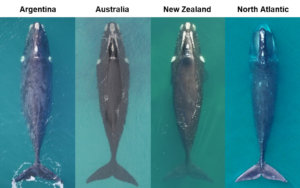
After wintering in the coastal waters of Florida and Georgia, right whales are back in the Gulf of St. Lawrence! The first two North Atlantic right whales of the season were spotted east of Chaleur Bay on May 3 during an aerial survey conducted by the Government of Canada.
This sighting immediately led to the implementation of the new dynamic protection measures planned by Fisheries and Oceans Canada. As a result, an area of 2,000 km² was quickly closed off to commercial fishing for approximately two weeks in order to limit the risk of entanglement. If rights whales continue to be seen in this area, it will remain closed for the remainder of the season.
As of April 28, and even before the arrival of the two cetaceans, a slowdown corridor had been put in place to reduce the risk of collision.
Following the aerial sighting of two right whales in a new area of the Gulf of St. Lawrence – it is not determined if they were the same whales as the previous week – Fisheries and Oceans Canada announced the closure of some twenty additional fishing grids.
As of May 16, approximately 4000 square kilometres, located between the Gaspé Peninsula and the Magdalen Islands, must be freed of all unattended fishing gear. These are essentially crab traps. This closure is in maintained for a period of 15 days.
Since the start of the year, news concerning protection measures specific to North Atlantic right whales has been like a roller coaster, alternating between hope, success, disappointment and difficulties.
On the 🙂 side, no carcasses found in Candian waters, numerous fishing areas closed. An initiative from the Canadian Space Agency to better track the whales from space and funds for research to understand and model right whale entanglements in fishing gear.
On the 🙁 side, fishermen under pressure, a lack of compliance with voluntary speed limits in Cabot Strait and a Marine National Monument used as a migration corridor opens to commercial fishing.
In June, Whales Online reviews the good and not-so-good news.
The first North Atlantic right whale carcass in 2020 was spotted during an aerial survey on June 25, drifting off the US state of New Jersey. This is the first carcass on the american side of the border ; no right whale carcass was found so far on the canadian side.
This first carcass was identified as that of a young male calf, born this winter to right whale #3560.
Just seven months old, the young North Atlantic right whale found last week likely met its fate following a ship strike. Worse yet, examination of the carcass revealed that there were actually two accidents that occurred just a few weeks apart. Read more
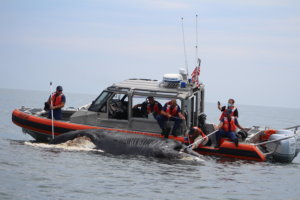
The Red List compiled by the International Union for Conservation of Nature (IUCN) has been updated, and the status of the North Atlantic right whale has been revised.
After previously being considered “endangered”, the species is now being uplisted to “critically endangered”. This is the most important level of urgency on the IUCN Red List, and the last category before complete extinction.
Of the 120,372 species examined by the IUCN, only 6,811 fall into the “critical endangered” category. If the North Atlantic right whale is acquiring a new status this year, it is mainly due to its very small population – not even 400 individuals, including probably fewer than one hundred breeding females – as well as the significant mortalities recorded in recent years. It is also on account of the serious threats the species faces: ship strikes, entanglement in fishing gear and the impact of climate change on its feeding areas. Currently, the last 400 North Atlantic right whales seem to be trending in the wrong direction.
“The dramatic declines of species such as the North Atlantic right whale included in today’s IUCN Red List update highlight the gravity of the extinction crisis,” points out Dr. Jane Smart, Global Director of the IUCN Biodiversity Conservation Group in the press release. Other alerts issued by the organization relate notably to African primates, the lemurs of Madagascar as well as the European hamster.
At least two North Atlantic right whales were observed in late September and early October in the St. Lawrence Estuary. This was a rare visit: the species had not been observed so far upstream in the St. Lawrence since 2016.
One of the whales was able to be observed, photographed and identified as the female Wolf (#1703) in the right whale catalogue maintained by the New England Aquarium. This 33-year-old adult female remained in the area for about 11 days before disappearing, probably heading toward the Gulf. The first confirmed sighting of Wolf in the Saguenay-St. Lawrence Marine Park dates from September 25, and the most recent from October 5.
The presence of at least a second unidentified right whale in the same area was confirmed during this period.
This exceptional presence led to an equally exceptional response from the Quebec Marine Mammal Emergency Response Network and the various stakeholders and users of the Saguenay-St. Lawrence Marine Park. All efforts were made to ensure that these amazing visitors had the safest possible stay.
In the US, an aerial surveillance team was tasked with locating an entangled North Atlantic right whale initially spotted by a cruise ship off Sea Bright, New Jersey. Unfortunately, the overflight spotted a second entangled right whale off the coast of Nantucket, New Jersey.
The first individual, spotted on October 13, was identified as whale #4680, a 4-year-old male, son of the female “Dragon”. He had last been seen on July 7 in the Gulf of St. Lawrence, at which time he was swimming freely. This time he appeared to be in very poor physical condition, injured and seriously entangled. “The whale has two visible lines partially embedded around its head and likely has a more complex entanglement that needs additional documentation,” points out the US Oceanic and Atmospheric Observation Agency (NOAA). Inclement weather made it impossible to immediately dispatch a rescue crew. And despite searches, the whale was not found again. The prognoses for survival are poor.
During an overflight off Nantucket on October 19 in search of #4680, a second entangled right whale was spotted. This time the team identifies the individual as #3920, an 11-year-old male also known as “Cottontail”. The entanglement is severe: “There is a line over its head, exiting both sides of his mouth, extending beyond his tail for about three to four body lengths,” NOAA details. “CCS removed some gear from the whale and added a satellite buoy for tracking.” The whale was spotted again near the coast on October 27 during an aerial survey; a second response effort is expected.
Until then, researchers were talking about a population of about 400 North Atlantic right whales, also known as North Atlantic right whales. But new estimates released in November show that only 356 individuals are still alive.
The National Oceanic and Atmospheric Administration (NOAA), the equivalent of Fisheries and Oceans Canada in the United States, which had estimated that there were 412 North Atlantic right whales remaining in January 2018, now estimates that in January 2019 there were only 366, a sharp decline of 11% in one year. Worse, this population would have only 94 breeding females left.
Taking into account the proven death of 10 individuals during 2019, the researchers therefore estimate the current population at only 356 individuals.
The breeding season is off to a dark start for North Atlantic right whales. On November 20th, the carcass of a very young calf was found stranded on a beach in North Carolina, United States.
A scientific team was immediately sent to the site. Preliminary findings indicate that the calf, a male, died at or just after birth without a clear cause of death. Genetic samples were taken in an attempt to identify the mother of the calf, who was not seen nearby.
This is a major blow for the species, which is said to have only 356 individuals still alive and a mere ten births each year. Each calf is extremely valuable for the safeguard of the North Atlantic right whale.
At present, this is the only calf observed since the beginning of the winter breeding season in 2020-2021. The birthing season for this species is not over. Already last year, the first calf of the season suffered a fatal collision only a few hours after its birth. Let’s hope that more joyful births will follow.




